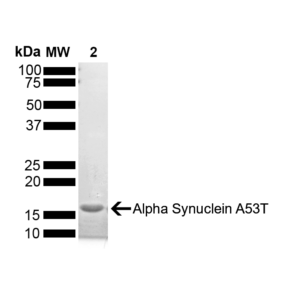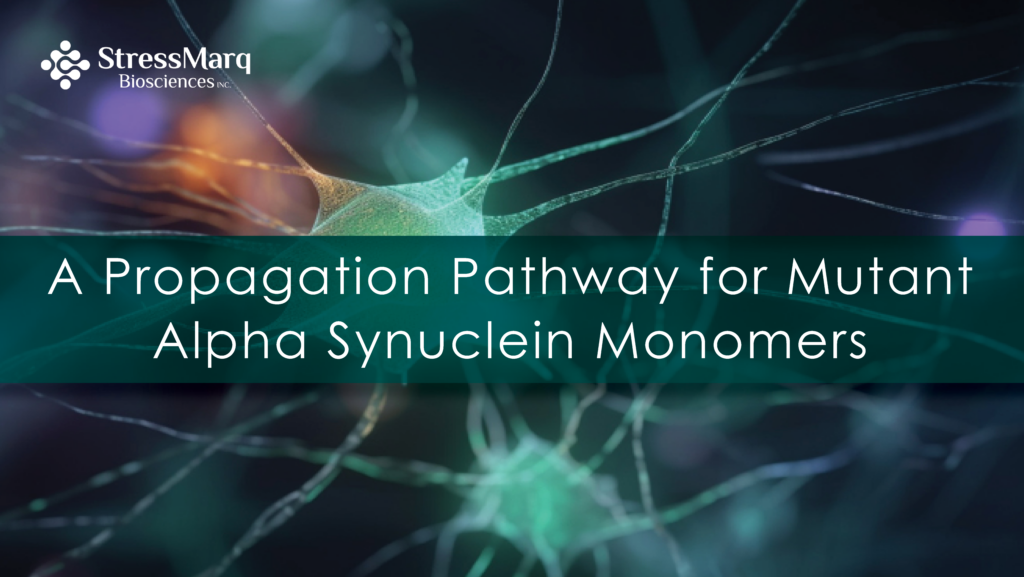A Propagation Pathway for Mutant Alpha Synuclein Monomers
Synucleinopathies are neurodegenerative disorders with common pathologic lesions made up of alpha synuclein aggregates. The spreading of these alpha synuclein aggregates has been found to correspond to worsening symptoms of neurodegenerative diseases such as Parkinson’s disease and Lewy body dementia. Until now, they have been understood to spread within the brain through trafficking between neurons. Furthermore, this theory has been supported by studies showing that the injection of alpha synuclein fibrils into animal and cell culture models results in the spread and induction of neurotoxicity.
A new study published in Cell Reports by Fujita et al., dispels the notion that only alpha synuclein aggregates are responsible for the spread of alpha synuclein. The researchers have described a new mechanism whereby mutant alpha synuclein monomers are capable of propagating to different parts of the brain via the brain’s lymphatic system. Neurotoxic aggregates are then formed after neuronal uptake of monomers. These results indicate that targeting non-aggregated alpha synuclein in early stages of synucleinopathies could be an important therapeutic avenue.
Propagation of mutant monomeric forms of alpha synuclein
Due to the close conservation of brain anatomy and the brain’s lymphatic (glymphatic) drainage systems between humans and mice, it was possible to use a mouse model for the purposes of this study. Researchers focused on a mutant form of alpha synuclein — alpha synuclein A53T — which contains a missense point mutation that forms toxic filamentous alpha synuclein neuronal inclusions capable of inducing neurodegeneration and apoptosis in mouse models2. Injection of fluorescently tagged mutant alpha synuclein into the orbital cortex via an adeno-associated viral delivery system was followed by analysis of its 3D distribution in the brain.
Surprisingly, the results demonstrated that it only took two weeks for mutant alpha synuclein monomers to travel from the injection site to remote parts of the brain, including the substantia nigra (SN). Another delivery system was needed to exclude any potential non-specific effects arising from either the fluorophore (EFG) or protein delivery system. For this secondary approach, StressMarq’s Human A53T Mutant Alpha Synuclein Monomers (catalog# SPR-325) were labelled with Alexa Fluor 488. Injection at the same site – the orbital cortex – confirmed the propagation of mutant alpha synuclein monomers to remote brain regions.
In situ aggregation of alpha synuclein monomers
To determine how alpha synuclein is propagated, researchers analyzed different molecular markers found in brain tissues using confocal microscopy. The glymphatic system was identified to transport monomeric alpha synuclein to the extracellular matrix structures surrounding neuronal cell types, allowing these monomers to reach the surface of the neurons. Following the subsequent uptake of the alpha synuclein monomers from the glymphatic system, antibody staining showed that alpha synuclein aggregates formed in the SN neurons after an observation period of 12 months.
These neuronal aggregates exhibited phosphorylation of alpha synuclein at Ser129, which is substantially increased in patients with Parkinson’s disease (PD). Moreover, structural examination of the fibrils and enzymatic digestion profiles found striking similarities between fibrils found in mouse SN and those found in PD pathologies.
StressMarq’s alpha synuclein mutant monomers
It has been widely accepted in the scientific literature that only alpha synuclein fibrillar states are responsible for spreading alpha synuclein between neurons, thereby accelerating the progression of neurodegenerative diseases like PD. StressMarq’s Human A53T Mutant Alpha Synuclein Monomers (catalog# SPR-325) were instrumental in discovering that alpha synuclein mutant monomers can propagate in a different way to fibrils by travelling to remote parts of the brain via the glymphatic system. Following neuronal uptake, the monomers are subsequently able to form disease-causing aggregates. In conclusion, targeting the relationship between mutant alpha synuclein monomers and the glymphatic system could now be a key focus area for future therapeutics for synucleinopathies.

Figure 1. SDS-PAGE of ~14 kDa A53T Mutant Alpha Synuclein Monomer (catalog# SPR-325)
Related StressMarq products
StressMarq is a leader in developing and supplying alpha-synuclein in different aggregation and conformational states, including monomers, oligomers, and pre-formed fibrils (PFFs). These highly characterized products assist researchers using disease models and accelerate drug discovery for neurodegenerative diseases. StressMarq also provides a range of antibodies for detecting different forms of human alpha synuclein, including Alpha Synuclein Antibody (pSer129) (catalog# SMC-600) which specifically detects the phosphorylated serine 129 of alpha synuclein and Alpha Synuclein Aggregate Antibody [2F11] (catalog# SMC-617) for the detection of alpha synuclein aggregates. See our website for a full list of alpha synuclein antibodies.
References
- Mutant α-synuclein propagates via the lymphatic system of the brain in the monomeric state. Fujita, K. et al., Cell Reports. 2023; 42 (8).
- Neuronal alpha-synucleinopathy with severe movement disorder in mice expressing A53T human alpha-synuclein. Giasson, B. I. et al., Neuron. 2002; 34 (4).


Leave a Reply